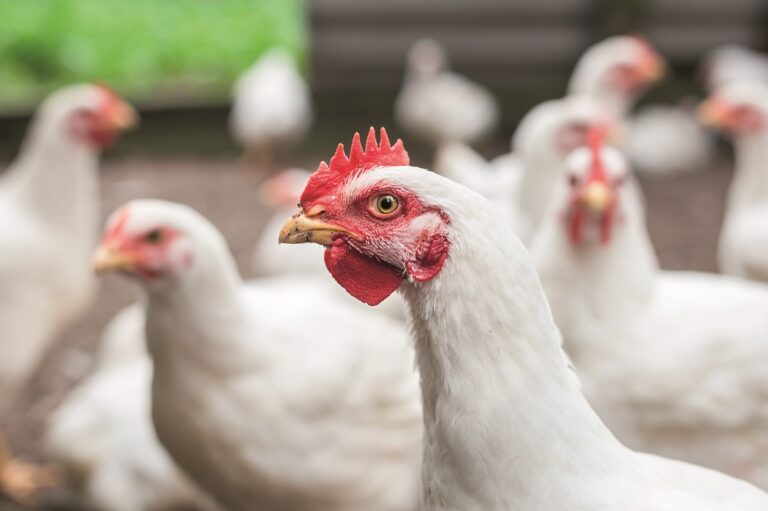By David Hodson, Rosehill Agricultural Services
The poultry industry has weathered enormous challenges; as a free enterprise that does not have a source of government subsidy it is through grit, ingenuity and relentless progress that we see the industry thriving today.
Poultry meat is the primary protein source of the nation and egg sales are at their highest level per capita since the fateful intervention from Edwina Currie in the 80s. This success has been brought about by the industry’s willingness to thoroughly audit every step from hatchery, to rearing, and finally to the laying house. There are over 700 auditable points in the Lion code and salmonella testing frequency is set to be increased from 15 weeks to a shorter duration.
As we now regularly have flocks in both free range and colony pushing 80-90 weeks, far longer than used to be the norm, the pressure is greater than ever. With improvements in bird genetics, feed quality, housing, and the role of water quality, we are seeing flocks being kept on for longer each year.
In the 1980s over 90% of commercial poultry was housed in cages, and now we currently have 67% of the UK flock housed in free range units. Trends often go full circle, but none more so than in commercial layer flocks. Originally, free-range units were eschewed due to the exposure of the birds to coccidiosis, worms and environmental extremities, in favour of cages which led to a controlled environment. It took the development of improved housing, effective vaccination and a greater understanding of animal husbandry for the free-range systems to once again become viable.
It should always be remembered though, that as we ask for more from the birds, we must always be prepared to give more. The key to a healthy, and in turn profitable. flock remains the same regardless of the system in which the birds are housed.
An effective vaccination program which is correctly administered will lead to an effectively primed and protected flock. The majority of the vaccine used within the rearing program will be ‘live’. By live we mean an attenuated version of the field disease, which has been changed or weakened to stimulate the production of immunity without causing disease. A live virus is also fragile, and I encourage all commercial farmers to remember that while water sanitisation is the cornerstone of health, the presence of chlorine and acid will render a vaccine useless. Just as chlorine will destroy virus and bacteria, it will not discriminate between vaccine and bacteria or virus that is present in the drinking water. Once a live vaccine has been damaged it will be incapable of causing immunity. Administration has never been more important, as we need the bird to have a well primed immune system to last for a greater duration of time. Our work at Rosehill since the 1970s has been in ensuring the birds arrive in the rearing house effectively protected for a healthy laying period.
As we have refined the laying environment, we have not just created a more hospitable environment for the bird (host) but also for parasites such as red mite. Free range and colony system are replete with areas for colonies of parasites to form. A heavy infestation can see a bird lose up to 5% of its blood per night, leading to restless birds, feather loss and stress induced increased feed intake. They are also vectors for a multitude of diseases such as salmonella, E. Coli, all blood borne viruses and Erysipelas. Controlling red mite has been shown repeatedly to have a positive effect on the profitability of flock through both reduced mortality, feather retention and improved egg output.
With the increasing density of poultry also comes the increased prevalence of Infectious Bronchitis. This disease spreads incredibly easily via air and physical routes. With the successful reductions so far in antibiotic usage, the role that IB plays in opening the door for secondary bacterial infections such as E.coli, which then require treatment with antimicrobials, cannot be forgotten. A proactive in-lay vaccination program consisting of the use of multiple strains of the IB virus at 6-8 weeks intervals, has brought this virus under control, however there are still parts of the country that suffer repeated bouts of IB challenge and are not vaccinating.
There has been an outbreak on 60 sites of the D181 strain of IB in the Netherlands, which has not been a significant strain until now. Should this strain come to the UK (one suspected case currently) it will bring with it the usual effects of reduced egg output with possible mortality from secondary E.coli and Mycoplasmosis. Therefore, using the live vaccines in lay will provide valuable cross protection.
One of the main challenges we are now facing in longer lived birds on both newly established and older sites is to keep getting the basics right. A thorough terminal disinfection and cleaning protocol is a must, as if the birds are staying 20 weeks longer then there will be an equivalent extra viral and bacterial load within the shed that must be eliminated before new birds are housed. Pest control must be done with careful attention to detail. I always recommend using a professional as they will approach the job in a focused manner with experience. Regardless of how effective a vaccine may be, it is accepted that an out of control rodent population is a significant salmonella threat.


